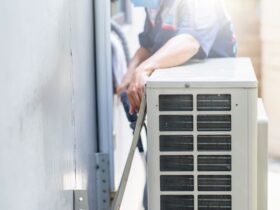For most people, spring is a season filled with vibrant scenery, sunshine, and fresh beginnings. However, for allergy sufferers, spring usually means nonstop sneezing and congestion. In fact, 30 to 60 million individuals in the United States alone suffer from spring allergies. Luckily, there are many ways to ward them off.
Although avoiding pollen and other allergens outdoors can be challenging, you can do it easily at home. Here are six tips to ward off spring allergies at home.
Maintain Your HVAC System
Air filters are responsible for keeping pollen, dust, pet dander, and other allergens from interfering with your HVAC system’s operations. While basic air filters can keep your HVAC system running smoothly, higher-quality filters can be an excellent investment during springtime. However, regardless of the type of air filter you get, maintenance is a must.
When it comes to purchasing a filter and ensuring your HVAC system’s maintenance, consulting with experienced HVAC technicians is ideal.
Close the Windows and Turn on the AC
When springtime arrives, opening the windows and enjoying the fresh air may sound tempting, but if you or a family member suffers from severe allergies, it isn’t ideal. It’s best to close the windows and use your air conditioner instead. However, you can still enjoy the fresh spring air, but you’ll need to constantly pay attention to pollen reports and close the windows whenever pollen levels become high.
Make sure to schedule preventive maintenance for your home’s air conditioning unit to confirm it’s clean.
Dust Around Your Home Regularly
The simplest way to ward off spring allergies and ensure your family’s health and safety is dusting regularly around the home. Whether you’re allergic to dust, pet dander, or pollen, you can keep these allergens at bay with simple dusting—and frequently cleaning around your home. That’s why if dusting wasn’t in your cleaning routine before, schedule a thorough dusting session every week.
When dusting, make sure to use a damp cloth or one that’s treated with a mild cleaning solution to make sure you get every speck of dust and other allergens. These items can do a better job of trapping these allergens, thoroughly cleaning off your home instead of reintroducing them into your indoor air.
Take Precautions Against Pollen
Pollen is the leading cause of spring allergies, and it’s easy to spot when it covers your sidewalks and car with yellow film. However, pollen isn’t as easy to see when you are dusted with it. If you spend any time outdoors during spring, you’ll likely enter your home with at least a light coating of pollen in your hair, clothes, or shoes.
Even the lightest coating can cause severe issues for allergy sufferers, so do your family a favor and leave the pollen at the door. That means putting your shoes outdoors, changing your clothes as soon as you arrive home, and taking a shower to wash the pollen out of your hair before settling in for the rest of the day.
Additionally, if you can adjust your family’s activity schedule, avoid going on runs or spending time outdoors, in general, in the morning, and plan them for later in the afternoon when pollen counts tend to be lower.
Inspect for Mold
Although pollen is the leading cause of allergy symptoms during springtime, it isn’t the only one responsible for spring allergies. Next to pollen, mold is the second most common trigger of allergy attacks. Mold is a substance that thrives in moist or humid environments, which often occurs during springtime.
Begin by looking for visible signs of mold in often humid areas, including vents, accessible ductwork, your whole air conditioning unit, and HVAC system. Remember that even if you don’t spot any mold, you should be able to smell it, and it usually smells like mildew. So, check for any foul smells around your home.
Invest in a Dehumidifier
If you think your house has a mold issue or struggles with high humidity levels indoors, which can trigger spring allergies, investing in a whole-home dehumidifier can help. A dehumidifier helps by keeping humidity levels in your existing HVAC system in check.
It’s a great device to have around during springtime since dust particles and other allergens often thrive in moist environments.
During spring, pollen, mold, dust, and other allergens may feel unavoidable to many, but you can always prevent them from invading the place you stay in the most—your home! Fight against the sniffles and watery eyes by following the strategies mentioned to ward off spring allergies at home.
















